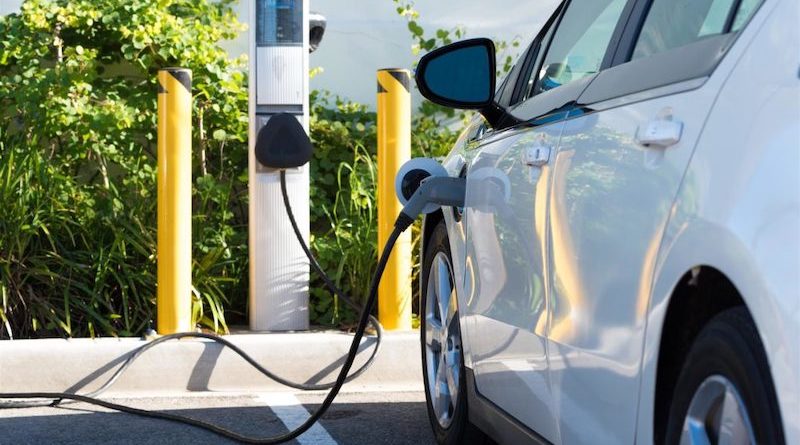
Are we ready for electric mobility? The race secure charging infrastructure
European car manufacturers have dominated the market for years, but in the next decade we face an unprecedented challenge: the transition towards cleaner transport.
Transport continues to account for a quarter of the EU’s overall greenhouse gas emissions, making clean mobility key in our fight against climate change.
But whenever we speak about zero emissions mobility, the same question arises: “are there enough charging stations across Europe?”
The European Parliament voted in June the de facto sales-ban on all fossil fuel cars by 2035. This house is following industry and consumers by doing so.
For the first time ever, more than half of car buyers surveyed worldwide want their next purchase to be an electric or hybrid model, and practically the totality of producers are now fully committed to gradually phasing out of the Internal Combustion Engine (ICE).
However, these optimistic forecasts for electric vehicles (EV) come with some significant challenges, the most pressing being the uneven and slow deployment of charging infrastructure across Europe.
In the EU, only 15% of EV charging stations are located in public spaces, with most being situated in private residential or commercial buildings. There are also huge disparities in the availability of infrastructure amongst Member States. For example, France, Germany and the Netherlands alone hold 69% of the Union’s charging infrastructure. In comparison, even though Spain is the second largest country in the EU by area, it hosts a mere 3% of the bloc’s charging stations. EV travel between European countries will therefore remain non-viable until the availability of charging stations is harmonized in the Union.
The Regulation on the Deployment of Alternative Fuels Infrastructure (AFIR) can be the solution to the problem.
For the first time, we will have a Regulation that sets binding targets for Member States to ensure the rollout of charging and refueling infrastructure across the Union. Undoubtedly it is a step in the right direction.
But although the Parliament’s position is quite ambitious, the Council and the Commission maintain a conservative stance that does not seem likely to completely put an end to the shortages.
The Commission estimated an average consumption of 12kw/100km per Electric Vehicle that translates to 1kW power output per electric vehicle target, however, industry and consumer associations agree that the figure is far too low. Each vehicle should have at least 3kW available so at least at the beginning, that’s the goal we should strive for. Considering the current deployment of charging infrastructure and the sales of electric vehicles we now face a classic “chicken and egg problem”. If a higher deployment during the first years of the electric vehicles is not pursued we will not be able to achieve a higher market share of these vehicles. And vice versa.
Therefore, the solution proposed in the ITRE committee where I worked as a Shadow Rapporteur, to establish power targets based on the percentage of the electric cars is, in my view, optimal. We first set very ambitious targets to end the “charge point anxiety” and promote the use of electric vehicles and then we remove those targets and let the market regulate by itself. On top of that, there is an urgent need to ensure the deployment of fast chargers, those that allow charging in half an hour. We cannot let one American company dominate these types of chargers. AFIR needs to address this.
Yet a big question remains. How do we tackle the distribution between urban and rural areas? Should we set the same targets for all regions regardless of their population? This will be the battleground during the interinstitutional negotiations or future trilogues. The Council, pressed by nordic countries, is advocating for certain derogations for depopulated areas such as reducing to half the available electric chargers in main roads in areas facing demographic challenges. But what if these low-populated areas are vast extensions of territory in the core of the country.
The objective of having a regulation with binding targets is to ensure that all European citizens can travel across all EU territory with zero emissions vehicles. But if we start fragmenting territories based on population we will hinder the green transition in regions that are already facing severe challenges.
My position in the Parliament has been that of keeping the overall targets regardless of population but acknowledging that a “one size fits all” approach cannot work.
We need to provide flexibility to set the targets where they are needed, provide further financial support in those areas now that we have the Recovery Plan and allow for certain derogations in those places where there is a very low traffic density, not population density.
This ability to travel seamlessly across all Europe can also be in peril if we don’t find a good agreement among us and with the Council when it comes to payment options. Right now we have a fragmented market whereby consumers need to download endless apps and have to deal with different payment methods and uneven transparency requirements depending on the Member State or even region. With this regulation we must strive to create a single market that allows drivers to use their contactless credit card, regardless of their car model, brand or nationality.
The automotive sector is changing completely and we have to offer certainty, legal security and a regulatory framework that allows us to bet on innovation and public-private collaboration and to ensure that all climate legislation is reviewed as a package. Moving along through the electrification of the car industry won’t be possible without a massive investment in public chargers.
We’ve set up very high ambitions and goals, and we must be ready in 13 years to stop selling polluting vehicles.
While AFIR is without doubt a step in the right direction to achieve carbon neutral mobility, we cannot turn a blind eye to the challenges that electrification will bring. Will the grid be ready to support vehicles plugging in at the same time? Will we stop depending on Russia for oil to start depending on China for critical raw materials? Is it too late to start massively investing in gigafactories?
Deadlines are necessary, but without the proper infrastructure they will be useless. Nowadays we face an evident truth: electric vehicles are luxury goods. And if people can’t manage to travel inside their own countries, the market won’t start growing as fast as we need it to. People will not buy electric cars.
In short, either we work on building the foundations or we will fail on our green transition.




